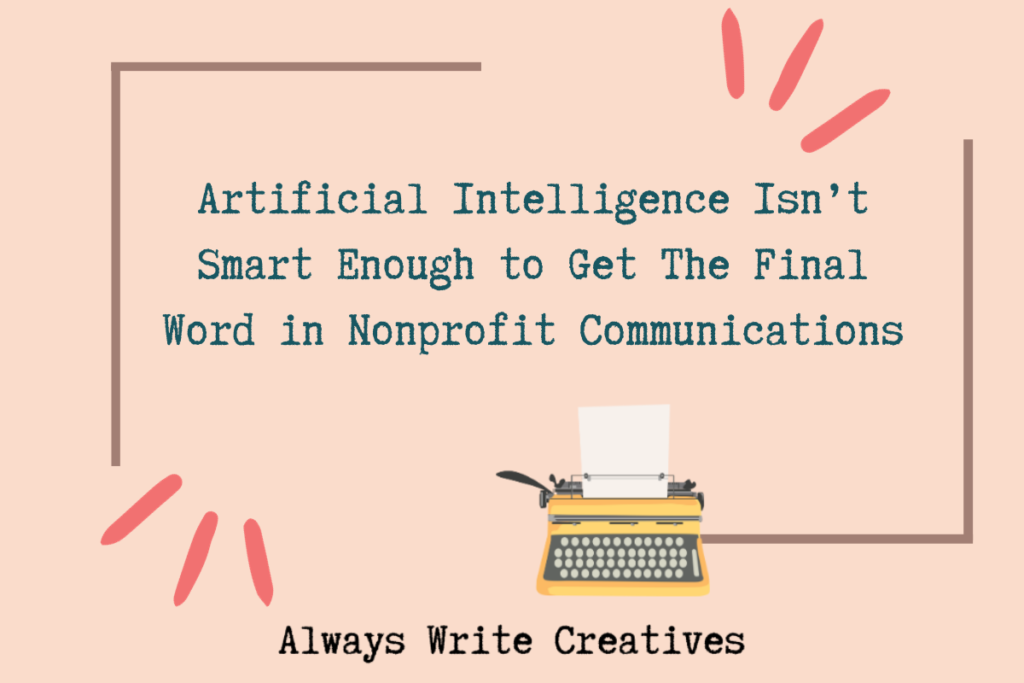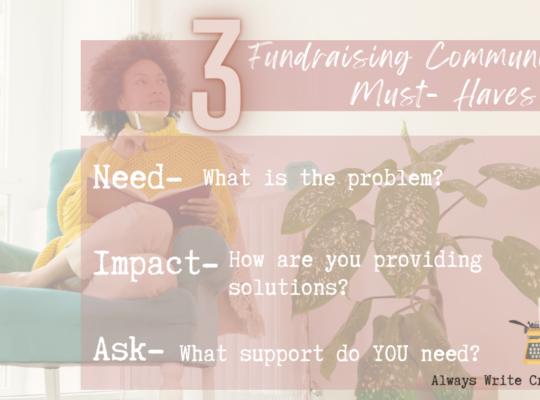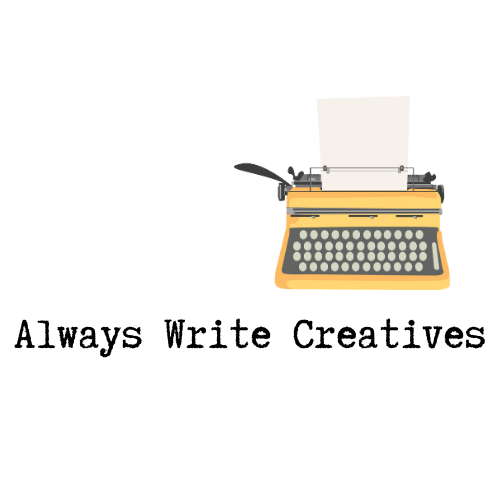I hate artificial intelligence (AI) in nonprofit settings.
There I said it. And I won’t take it back.
Before you label this former journalist as a person who hates technology because it’s “taking our jobs,” I’m not. I despise the use of AI to write communications and appeals for nonprofits not because I’m a writer, but because it exposes those who aren’t.

At best, AI should be used as a supplement to, not a replacement for, a good wordsmith – or graphic designer. A professional writer has an eye and ear for word pairings that artificial intelligence can’t replicate. It’ll get close, but not quite the homerun you’re chasing. And forget about consistency in tone and sincerity.
Think about a cherished family recipe that lives in the head of dear Aunt Sally. She’s made it a million times and every time she does, it’s *chef’s kiss*. You finally convince her to give you the recipe. You greedily whip it up in your own kitchen, but it’s not quite. You know the ingredients, but even still, you can’t duplicate hers. Wanna know why? It’s because your aunt has the “sauce” – that special something that she’s learned from years of experience. That sauce takes a basic recipe from good to great. Don’t feel bad, AI doesn’t have the sauce either.
Another downfall of using AI as your team’s lone writer is that you must give it the right prompts to give you something close to relevant.
Exhibit A: I asked an AI program to “Write a postcard to donors to give me money.” It came up with:
“Dear Amazing Donors,
I hope this postcard finds you well and filled with the warmth of gratitude. As the sun sets over this picturesque beach, I want to take a moment to express our heartfelt appreciation for your unwavering support.
Your generosity has been a beacon of hope for our cause, and it continues to make a profound difference in the lives of those we serve. Thanks to you, we’ve achieved remarkable milestones: Your donations have provided shelter, food, and hope to those experiencing hardship. Your kindness is the reason smiles have returned to the faces of many.
But our work is far from done, and there are more dreams to fulfill, more lives to touch, and more positive change to create. To continue our mission and make an even bigger impact, we humbly ask for your continued support.
Your generous contributions have always been instrumental in our success, and they remain the driving force behind every achievement we unlock. Every dollar you donate brings us one step closer to our shared goals.
Thank you for being the wind beneath our wings, the sunshine in our skies, and the hope in our hearts. Together, we’re turning dreams into realities, one donation at a time.”
Overall, it’s OK but not quite right. Somehow, it manages to be endearingly cheese AND coldly generic. Maybe an untrained eye would miss that and run with the copy provided, but a seasoned writer wouldn’t set you up like that.
If you had a writer on your team, they would know how to remove the generic bits and tie AI’s wording into your mission. They would also read the piece and edit accordingly with the call to action and audience in mind, all the while keeping an alert ear on your organization’s tone. They would know when it’s OK to be whimsical versus strait-laced, gushing versus stoic. A good writer would also know that when entering prompts into an AI platform that you should include your organization’s name and mission to get more specific outputs.
At the end of the day, you’re reaching out to your donors with an update or an appeal for support. Don’t fall short because you left AI behind the wheel unattended.
Support the arts – hire a professional! And if you think your organization can’t afford it, your budget would likely suffer even more with an AI misstep.




